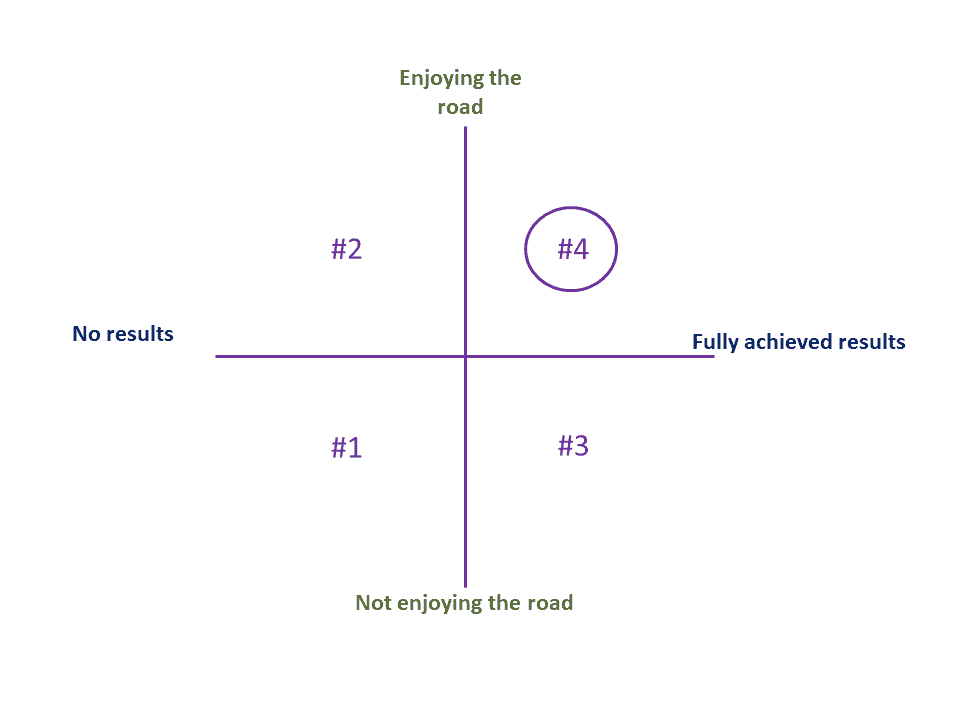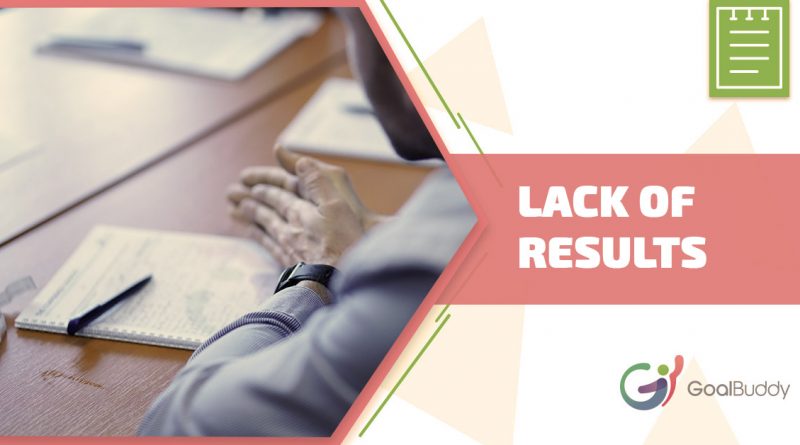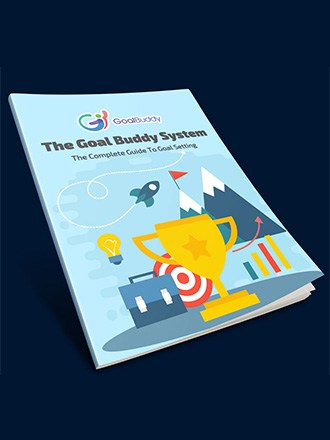Do we need to change course when our efforts fail?
There is nothing more detrimental to our motivation than poor results – we do our best but we still don’t get what we hoped for. What to do then? How to proceed? Today we will look at this and how you can deal with the issue.
How to evaluate our efforts?
One of the most common and the gravest mistakes is to equate a goal with the outcome of our work.
There is one fundamental law in our system:
We look at the objective not based on the result but as our actions since only they are completely under our control.
Success is never to be guaranteed and if we focus solely on it then we risk being quickly disappointed when we don’t get soon enough what we were aiming for.
That’s one of the reasons we named the short-term objectives “90-day action goals”. The idea is that we commit to act in a certain way for the next quarter while the intermediate results will be one of the many ways we measure success.
Actions are the path we chose to go on
The 90-day goals are for implementing the strategy and they depend entirely on us.
There are many ways to achieve the same outcome. But there are many more that will not take us there.
The way we do things plays the role of a litmus test which reveals how serious we are about it. If we are thinking of giving up it is a red flag that something’s wrong. Perhaps we have no strong reasons why we want it, or that it isn’t truly our type of an objective.
Sometimes we simply must continue and be resilient.
But sometimes we have to go the other way.
There is no panacea here because every situation is unique. Still, we can start with the following:
Let’s examine an objective from two different angels
- One is the desired endpoint;
- The other is the chosen route that will lead us to it.
In the long run, our success is the sum of the small steps forward. But to sustain this we have to enjoy the journey. Otherwise, we will, sooner or later, give up. Therefore, we have to analyze the 90-day actions and make a decision based on how far we got at the end of the 90-day period.
There are four separate possibilities here.
Option # 1: We don’t get to our destination, nor we like the chosen path

This is the worst-case scenario.
Let’s say that a person who was never on a diet and eats whatever and whenever they feel like it. Then they decide to go on a very strict nutrition routine. Every single day will be a struggle and they will get quickly in trouble while results will be minimal if any at all.
What to do?
We can claim without any doubt – one needs to change strategy for the next 90 days.
We can give it a try, getting your feet wet so to speak, and find out if it will do for us. Even if we are not very comfortable, we can do it for a little while.
But the will power isn’t an unlimited resource and we cannot rely on it for too long.
Therefore, it is best to explore other, more exciting and enjoyable, avenues to the same destination. Otherwise, we will begin finding any type of excuses for not doing it at all, and eventually, we might even quit trying.
Option # 2: We fail to hit the target but the whole experience was a good one

This possibility can unfold in a variety of cases.
Someone may have fun playing basketball, for example, but that would not necessarily translate into losing weight and getting into shape. Or someone else can have their dream job, or be on the mission of their life, and yet they won’t be able to get it to match, for example, their financial targets.
Let’s have a look at something like that which we had to go through.
Ivan as a “late bloomer”…
It was six years ago when he decided to stop being the typical “couch potato” and become a fitness fanatic.
He found a trainer who developed a special program for him. It was some tough workouts three times a week and a completely new type of diet of vitamins, amino acids, supplements, and whatnot.
Ivan was 100% sure it will do the job. He started the program excited and could almost see himself as becoming as fit as any of those guys on the cover of Men’s Health magazine.
Well, it didn’t happen. At least, not in the first three months. It was only three years later that he was able to finally whip himself into that kind of physical shape.
The solution: persistence is your friend
“Do I want quick results?” is the very first question before changing strategy.
And the green light for it will be whether you like the way things are going.
If you enjoy doing something then it is a sure sign you are on the fast track of making it an integral part of your daily life. However, if you aren’t making much progress at the intended pace then give it some more time.
In such a case, you will either keep moving forward in gradual advancements, or you will learn more about how to do that.
Our example
In the vision for the “GoalBuddy” project, we are committed to helping millions of people live happier while fulfilling their dreams with relative ease. We have chosen several distinct routes and one of them is through weekly articles and podcasts.
For more than 100 podcasts, we have been doing something that brings us great satisfaction and joy which means we don’t have to apply much effort.
However, our audience was not growing. The process of it all was great, but the effect measured in the numbers of those people who got interested wasn’t quite the same.
The solution: a small change
If you like how you are doing but the results are far from encouraging then start looking for ways to change things a little bit.
Sometimes a small change can trigger an avalanche of good things.
Recently, someone suggested something seemingly insignificant. Instead of a pre-recorded audio, we did a live podcast. And it did make all the difference – the event drew the interest in the thousands.
Option # 3: We got what we wanted but we didn’t like the price we had to pay

It is interesting how we can hate the whole progress and yet it produces the desired outcome regardless of what aspect of our lives it might be, i.e. career, health, relationships, etc.
People could easily be fired up by an idea. However, it may turn out that our excitement is only about crossing the finish line, and not about how we get there. When we begin something for the first time we can find out whether we are really into it if we are eager to start digging in the details.
First solution: if you are not comfortable, change it
Let’s say that after a few 90-day goals you are more or less OK with the achieved but you are far from happy. Perhaps, it’s time to realign your strategy and look for some other, less traveled, roads.
You will always have the fallback option of your old way if the experiment doesn’t turn up to be as good. The positive of any experience is that you get to learn something new, you understand what works for you, as well as you gain more confidence in the process.
The second solution: give yourself a chance to like it
The easy way out when something isn’t bringing you much fun is to give it up, right? But what if with a little bit of effort and focus you manage to get things, important things, done?
And one more point – if you succeed, then obviously you must be doing something right. It’s normal that the better you get at something, the greater the pleasure of you will be getting out of doing it. Let’s say you aren’t too tempted by cooking but you get asked repeatedly by your loved ones to take part in Master Chef. Don’t you think that it is very likely that you will start finding it is so much fun?
Perhaps a universal remedy?
Try to appreciate those things that you do well which will inevitably bring extra fun and fulfillment. As for the rest, eliminate or delegate, reorganize, and do more of what you like and less of what you don’t.
It will most definitely take some time but it is well worth it since it will get you to the last possibility.
Option # 4: you get things done and you love it

This is the best place to be – the “Inspirational Quadrant”.
Finding your Ikigai means that you do what you love and you do it very well. You end up gaining momentum and get into the zone of exceptional results.
Unfortunately, we cannot be there all the time because life happens and there are always emergencies as well as unforeseen circumstances. And yet, this is the direction we all want to stay as long as possible.
The little but helpful nudges
Now that we’ve explored in full the four quadrants let’s talk for a little bit about how we feel about it all.
The best indicator to know if you are on the right track is your energy levels.
Not every task is so taxing that you have to lie down and recover after you finish it. There are many things that you begin doing while still half-asleep and by the end of it, you are excited and full of energy.
We both occasionally make a written record of how our long-term activities affect our energy.
There are things that you are good at but they are so demanding that you feel completely exhausted. You have built up skills and expertise, but deep down you do not find a sense of achievement in your success.
Some require your unique skills and abilities. Each time you succeed you feel on the top of the world and we all need more of that feeling.
The road is important
We know that there are a lot of goal-setting systems but the “GoalBuddy” one allows us to reach for our dreams and be happy while doing that. We would like to see a greater number of people give it a try and we are quite glad that you are already doing exactly that!


